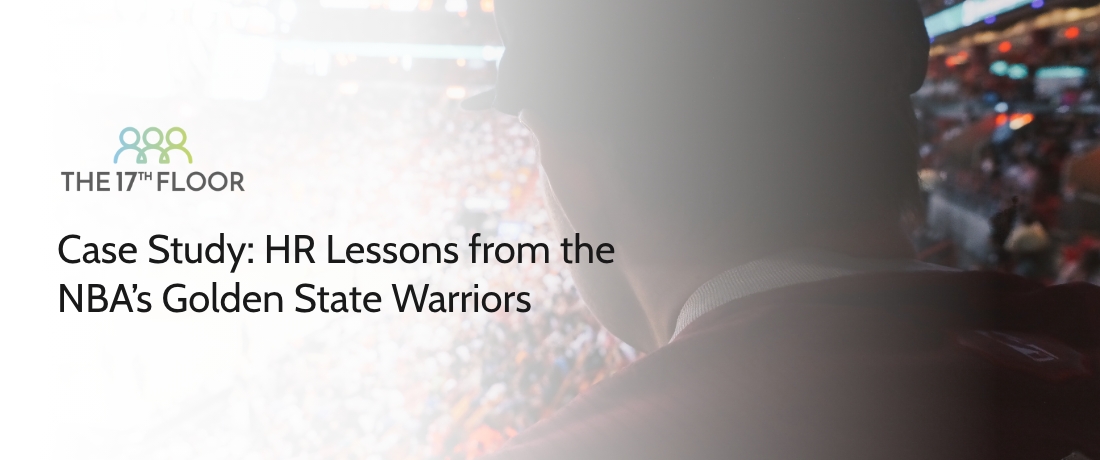Case Study HR Lessons from the NBA’s Golden State Warriors

In 2010, Joe Lacob and Peter Guber won the bid to buy the Golden State Warriors’ wobbly franchise for $450 million. Five years later, the Golden State Warriors won their first NBA championship title in 40 years. So what changed? According to Filip Caeldries it all has to do with their people and culture. The 17th Floor invites you to read the following case study conducted by him.
Once Joe Lacob had bought the Golden State Warriors in 2010, he did what he had always done as a venture capitalist. He took a little time to observe the operation. Then he blew it up.
“I spent six months doing what I’d do with any startup company. I spent six months looking at things and realized I didn’t have the right people here.” […] “We tore it down and built it back up.” (Saracevic, 2015)
For Lacob, it’s all about people. The Warriors were not going to become a winning team without having the right people on board. For example, Lacob realized he needed better talent in the front office, so he got the most famous executive in the game, Jerry West (a two-time NBA Executive of the Year winner). He needed a new GM, took a huge gamble and hired the untested Bob Myers. He wanted to strengthen the business side of the Warriors’ operations and hired Rick Weltz (the former CEO of the Phoenix Suns and a winner of the Marketer of the Year award) to become the team’s COO.
Seven of nine VPs were changed in a two-year period. Lacob wanted the team to get bigger, so he traded Monta Ellis – his best player at the time – for an oft-injured Aussie named Andrew Bogut. Shortly after trading Ellis, Lacob was booed by 20,000 Warrior fans. However, his departure opened the door for Stephen Curry to flourish. Bogut gave the team much-needed toughness, and his presence also attracted other high-profile players to round out the roster.
In an interview one week before winning the NBA championship, Lacob made the following observation. “We really hit it out of the park. You can attribute it to a little bit of luck. Or you can attribute it to the people we picked. That’s what I do for a living — 30 years. I pick people.” (Saracevic, 2015)
Lacob’s approach to people management echoes one of Jim Collins’ main conclusions in Good to Great. All executives who ignited a transformation process from good to great first got the right people on the bus and the wrong people off the bus (Collins, 2001). Once Lacob and Guber had the right people on board, the problem of motivating and managing them essentially went away.
The second factor that made an impact and was vital to this transformation was culture. Every organization has a culture. But too many have a culture of failure. They have a culture that fails to inspire employees to do the best they can. For the Warriors to become a championship team, it needed a culture that made it possible to become first-class.
“You have to build a culture that is respectful. We didn’t want any bad guys in the locker room or in the organization. When I took over, we cleaned out everything”.
During an interview, Guber was asked how he and Lacob had transformed the Warriors from a group of “underperformers” to a winning team. His answer was clear: “Culture was our business plan. When the chips are down, the soft stuff matters.” (Fox Business, June 18, 2015).
―
Read more about this case study published in TIAS School for Business and Society.
What do you think about taking people and culture as pillars of an HR plan? Tell us what you think about this approach in the comments below.
Sources:

Martina Heine, PLP
At my organization, we have five Pillars, and one of them is People. After reading this, I am impressed on what they achieved and agree how Culture plays such a huge role in a business.